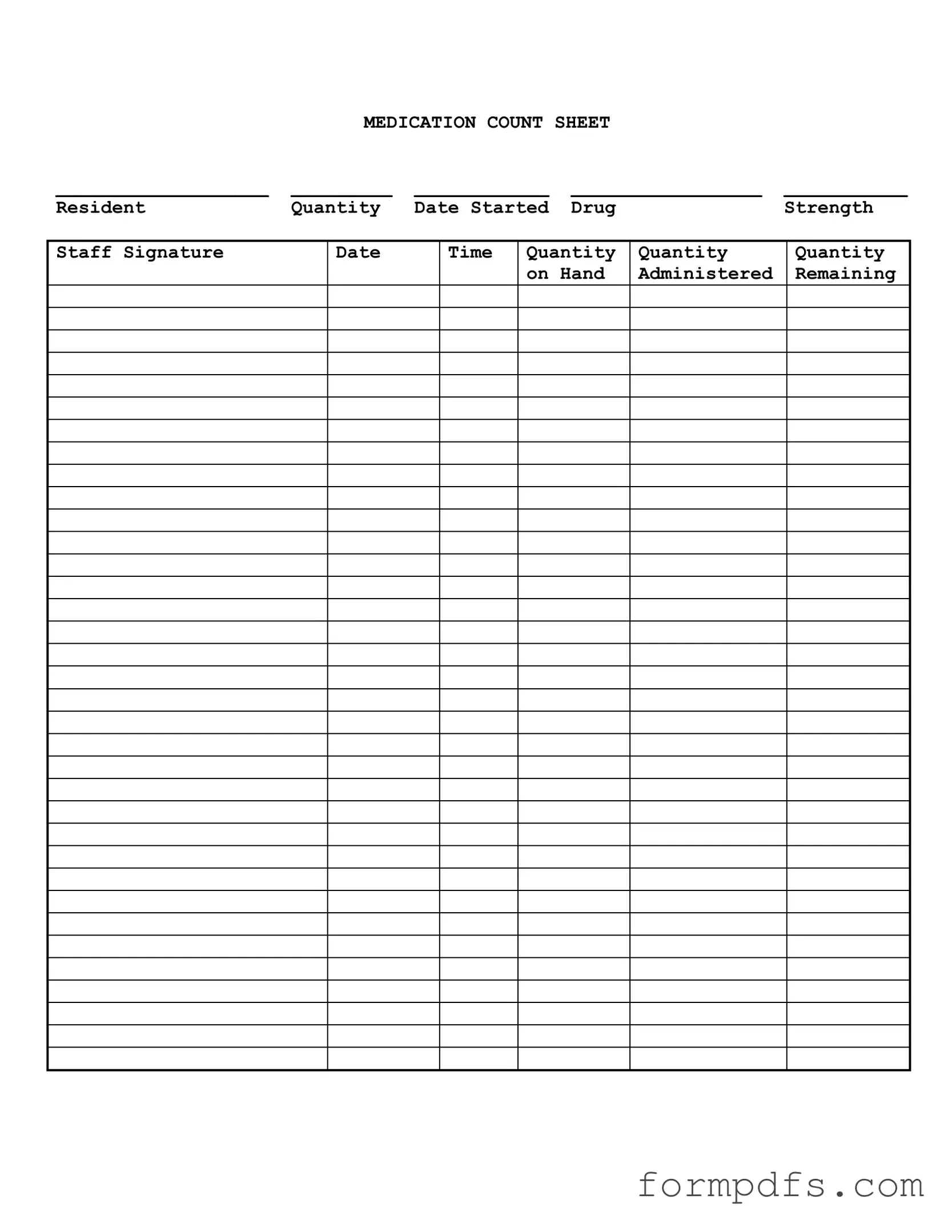What is a Medication Count Sheet?
A Medication Count Sheet is a document used to track the administration and inventory of medications for residents in a healthcare setting. It helps ensure that the right amount of medication is given and provides a clear record for staff to reference.
What information is included on the Medication Count Sheet?
The form typically includes the resident's name, the quantity of medication, the date the medication was started, the drug strength, staff signatures, and timestamps for when medications are administered. Additionally, it tracks the quantity on hand, the amount administered, and the remaining quantity.
Why is it important to maintain a Medication Count Sheet?
Maintaining an accurate Medication Count Sheet is crucial for patient safety. It helps prevent medication errors, ensures compliance with regulations, and provides a clear audit trail for healthcare providers. This accountability is essential in promoting effective medication management.
Who is responsible for filling out the Medication Count Sheet?
Typically, trained staff members, such as nurses or caregivers, are responsible for completing the Medication Count Sheet. They must accurately record the necessary information each time medication is administered to a resident.
How often should the Medication Count Sheet be updated?
The Medication Count Sheet should be updated each time medication is administered. This ensures that the records reflect real-time information about the medication inventory and administration, helping to maintain accuracy.
What should be done if there is a discrepancy in the Medication Count Sheet?
If a discrepancy is found, it is important to investigate the issue immediately. Staff should review the records, verify administration times, and consult with colleagues to determine the cause of the discrepancy. Proper documentation of any findings or corrections is essential.
Can the Medication Count Sheet be used for all types of medications?
Yes, the Medication Count Sheet can be utilized for various types of medications, including oral medications, injections, and topical treatments. However, specific protocols may vary based on the type of medication and the policies of the healthcare facility.
What should be done with the Medication Count Sheet after it is filled out?
Once the Medication Count Sheet is completed, it should be securely stored in accordance with the healthcare facility's policies. This ensures that the records are easily accessible for review and audits while maintaining patient confidentiality.
